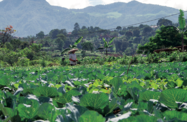Improved weather conditions and expanded acreage should help Indonesia’s palm oil industry rebound from a weak harvest in 2016, though projections of higher output may put downward pressure on prices and have prompted calls for increased domestic consumption.

Stronger yields are expected in 2017 for Indonesia – the world’s largest producer of palm oil, at 34m tonnes last season, or 54% of global supply, according to the US Department of Agriculture – although some effects of last year’s El Niño weather phenomenon, such as drought conditions in many areas, are still being felt.
Industry projections put crude palm oil (CPO) production for this year in the range of 33m-35m tonnes as output increases in the second half – the upper end of the forecast bracket puts CPO yields some 10% higher than last year.
According to revised data issued by the Indonesian Palm Oil Producers Association in late March, CPO production in 2016 rose by 10% to 32.5m tonnes, above earlier estimates of 30m-32m tonnes.
The new sector data and forecast follow a marginal fall in export volume last year, though earnings actually rose due to a global production shortfall that lifted prices.
Last year Indonesia’s foreign sales from CPO rose by 8% to $17.8bn, despite a 2% dip in volume to 25.7m tonnes, according to the Indonesian Oil Palm Estate Fund. In dollar terms, this meant palm oil accounted for 13.8% of Indonesia’s non-oil exports that year.
Pricing fluctuations
Much of this increase is down to the behaviour of prices, which rose from $558 to $789 per tonne over the course of 2016 – levels the fund warned could not be sustained long term without harming palm oil’s competitiveness against other vegetable oils.
Expectations of increased production and price competition have seen Indonesian CPO prices ease through the first quarter of 2017 and into the second – prices fell to $722 a tonne in early March, before recovering somewhat to $765 later that month.
Any upticks are likely to be short-lived, however, due to higher levels of production and as prices track declines in other vegetable oils, according to Commtrendz, a local consultancy dealing in commodity futures and foreign exchange..
Boost from biofuels
The sector is meanwhile seeking to boost local demand for biofuel, which would provide a steady market to help hedge any international fluctuations, according to Arif Rachmat, CEO of oil and rubber plantation operator Triputra Agro Persada.
Industry leaders have been in close consultation with senior government officials for an increase in palm oil consumption through “public service obligation” (PSO) – subsidised biofuel sold through state outlets – while also looking to increase sales of biofuel to private retailers.
“We are aiming to increase domestic consumption, hence the importance of non-PSO,” Rachmat told OBG. “The target is for domestic consumption to double, but if we can help it rise from 3.5m to 5m tonnes, that would be a successful milestone for non-PSO.”
Given forecasts that prices may fall this year, Arif said higher levels of domestic consumption via greater take-up of non-PSO were vital to ensure pricing stability going forward.
Troubled EU waters
Calls for measures to lift domestic consumption of CPO have increased in importance following a threat to Indonesia’s exports to Europe.
On April 4 the European Parliament approved a resolution requiring that all CPO oil imports meet international sustainability standards by 2020. The resolution also called for a ban on all imports of biodiesel utilising palm oil. If imposed, the restrictions could dampen Indonesia’s CPO export trade with the EU, which currently amounts to more than 3m tonnes annually.
To reduce this risk, the Indonesian government is looking to boost usage of biofuels in the local market to soak up output previously exported to the EU, Andi Amran Sulaiman, minister of agriculture, said in mid-April.
“Europe only imports 3.2m tonnes from Indonesia, meaning that it’s no problem if we don’t export to Europe. We even plan to increase the B-20 to B-30 [20% to 30% mix with normal diesel], which requires 13m tonnes,” he told local media.
Other estimates – citing additional proposals to increase the palm oil input for electricity generation at oil-fired power stations to 30% of the fuel mix – put the projected rise in domestic CPO consumption as high as 40%.
Higher domestic consumption would help insulate Indonesia’s palm oil producers from fluctuations in the international market, though it could also erode export earnings potential if new capacity is not taken up by both international and local processors.
At a sector conference in March in Kuala Lumpur, Thomas Mielke, industry analyst and managing director of London-based Aethos Consulting Group, raised his forecast for growth in global palm oil production in 2017 to 6m tonnes, up from the 5.5m tonnes estimated late last year.


